

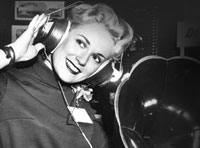 Stereo sound reproduction was first experimented with in the early 1900s, and
was put into use in motion pictures in the 1930s. However, Stereo sound did
not gain much widespread popularity until the introduction of the Stereo LP
phonograph record in 1957, which suddenly added a whole new dimension to
music listening.
Stereo sound reproduction was first experimented with in the early 1900s, and
was put into use in motion pictures in the 1930s. However, Stereo sound did
not gain much widespread popularity until the introduction of the Stereo LP
phonograph record in 1957, which suddenly added a whole new dimension to
music listening.
However, the untold story is that multiplex AM Stereo was being developed at the same time as FM Stereo. Engineers such as Leonard Kahn developed and tested AM Stereo systems in the late 1950s that worked very well and would have made a very satisfactory solution for AM Stereo broadcasting at the time.
But, things were different back then. AM was still the most popular band for radio listening. Most people did not even have an FM radio, and FM stations were struggling to gain listeners. Because of this, the FCC (Federal Communications Commission) thought of adding Stereo sound to FM -- and FM only -- as a way to help it gain popularity. So, the FCC approved use of FM Stereo, but did not allow AM Stereo to be used, since it would have given AM even more of an advantage in listenership over FM.
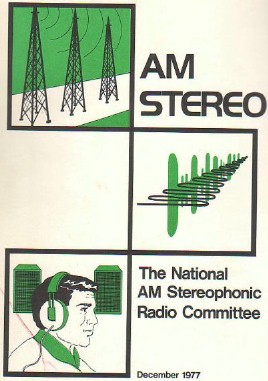 Well, as well all know, by a few decades later, things had definitely changed.
By the 1970s, the FM band was becoming the preferred place for music listening,
and the monaural audio of AM radio sounded inferior in comparison.
Many AM stations still offered attractive programming and had high ratings,
but listeners were no longer turning to AM as their primary source for musical
entertainment on the radio.
Well, as well all know, by a few decades later, things had definitely changed.
By the 1970s, the FM band was becoming the preferred place for music listening,
and the monaural audio of AM radio sounded inferior in comparison.
Many AM stations still offered attractive programming and had high ratings,
but listeners were no longer turning to AM as their primary source for musical
entertainment on the radio.
As the 1980s approached, the FCC had finally decided to take another look at AM Stereo, because it was one way to help AM radio stay competitive with FM. There were five different AM Stereo systems being proposed to the FCC, and the FCC struggled with the decision of which one to choose as the single standard for AM Stereo broadcasting.
At first, the FCC decided to select one of the systems, designed by Magnavox, as the standard. As you can imagine, the proponents of the four other systems complained, saying that their systems worked better than Magnavox and that the FCC's research which led to this decision was flawed and incomplete.
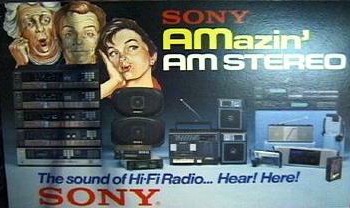 The FCC was going to choose another system, designed by Harris, as the single
standard, but by this time the popular opinion was becoming that they should
simply allow all of the systems to be used, and that the preferences
and competitive forces of broadcasters and radio listeners would eventually
converge toward one of the systems as the single "de facto" standard.
The FCC was going to choose another system, designed by Harris, as the single
standard, but by this time the popular opinion was becoming that they should
simply allow all of the systems to be used, and that the preferences
and competitive forces of broadcasters and radio listeners would eventually
converge toward one of the systems as the single "de facto" standard.
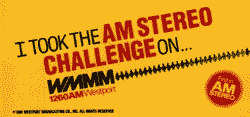 But out of this group, Motorola was the largest company, and was already a
parts supplier for many car radio manufacturers such as Delco (GM's car radio
brand). So, by 1986, the majority of AM Stereo radios that were available
only supported the Motorola system, named "C-Quam" (Compatible Quadrature AM),
and other countries like Australia, Mexico, and Canada were choosing the
Motorola C-Quam system as their single standard for AM Stereo. By this time,
Harris had also given up on their own AM Stereo system, and put their support
behind the C-Quam system as well.
But out of this group, Motorola was the largest company, and was already a
parts supplier for many car radio manufacturers such as Delco (GM's car radio
brand). So, by 1986, the majority of AM Stereo radios that were available
only supported the Motorola system, named "C-Quam" (Compatible Quadrature AM),
and other countries like Australia, Mexico, and Canada were choosing the
Motorola C-Quam system as their single standard for AM Stereo. By this time,
Harris had also given up on their own AM Stereo system, and put their support
behind the C-Quam system as well.
People who supported the Kahn system were upset because they thought the Kahn system had better performance than Motorola's C-Quam system. They were quick to point out some problems with the Motorola system, such as "platform motion", a condition in which an unstable signal can cause the audio "platform" to fluctuate between the Left and Right channels, as if somebody was turning the Balance knob on the radio.
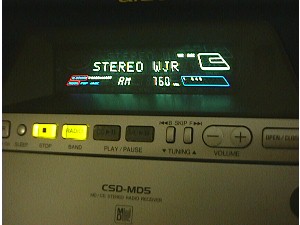
AM Stereo has been on the air for over three decades. And because of advocacy on Internet sites like this one, it remains a popular and well-known technology. People are still interested in getting high-fidelity Stereo audio from the AM radio band. AM Stereo is an established standard, it works very well, and it is affordable to both stations and listeners. That is the AM Stereo Advantage!